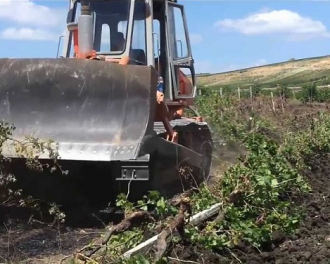The End of ‘Common’ Wine

I realize you are all lovers of fine wines and that the subject I will be dealing with here may initially seem unimportant. And yet it has to do with a very precise, disturbing and, I might add, inescapable sign of things to come in the world of Italian wine. And the sign is that the price of ‘common’ bulk wine in Sicily, an unlabeled commodity, has fallen to less than 20 cents a liter. In other words, five liters for one euro. The price is so far below production costs that there will soon be protests, similar to those a few years ago, and in the medium-term thousands of hectares of vineyards will be abandoned and not just in Sicily. This because close to half of national production is still that of bulk or common wine.
Up until now the sector survived thanks to a ‘dominical’ system, practically a tax free one, in support of those who produced grapes and made some wine on the side, often for personal consumption, but not as their primary activity. Now, to be optimistic as well as realistic, we have to realize that half of ordinary wine production in Italy is at risk. In the Asti area of Piedmont, for example, they say that for every old grape grower who dies a hectare of Barbera grapes goes with him. The reason why bulk wine prices are falling in Italy is basically because wine costs less in other countries. In Argentina, for example, labor costs are cheaper and the land is less expensive and this means they can produce better wines at lower prices. For Italy, it means we will have to produce quality and other wines with a lower profit margin.
Obviously, we will have to do this, if we can, and it will involve focusing on the image and international prestige our wines can achieve, through adequate promotional initiatives and ensuring unquestionable quality. We will also have to get used to considering wine as something much different than just a daily food stable. Since we are drinking it less, good Italian wine will be even more expensive in the future and we will have to produce cheap Italian wine in cartons in order to compete with wines from Argentina, Spain or Romania.
The abandonment of vineyards will also change the landscape, especially where vines are more difficult and costly to cultivate. Worse still, vineyards will also be abandoned in other areas if they are unable to produce wines that can obtain a top quality ‘status’ and demand the price necessary to cover production costs. The olive oil sector is having the same problems. Even though the situation is very troubling, little is being said about it. This because we are pompous as well as blind, boasting about the ‘excellence’ of our wines and the numbers, in part positive yet also fragile, which demonstrate our success in exporting wine. This year, in fact, we should export 20 million hector liters of wine for a turnover of five billion euros. However, when you do the math this works out to four euros per liter, three euros for a 0.75-liter bottle. The French export less but at twice the price and even the price of Australian wines is greater than what we get. And yet no one ever talks about this.

 Italiano
Italiano








